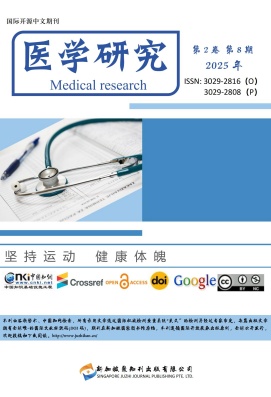
 info@juzhikan.asia
info@juzhikan.asia
 info@juzhikan.asia
info@juzhikan.asia
上海理工大学,上海,200093;
摘要:前列腺癌(Prostate Cancer, PCa)是男性中最常被诊断出的癌症之一。由于我们无法及早识别出前列腺癌患者,导致了大规模的过度治疗。目前常用的筛查方法是PSA(前列腺特异性抗原)筛查,但该方法也会带来一些负面影响,例如PSA假阳性引发的焦虑和前列腺活检可能导致的感染或直肠出血等并发症。PSA筛查的主要风险在于过度诊断,因此,发现或鉴定新的肿瘤标志物成为关键。当前研究表明,质谱技术凭借其高精确度,在鉴定和定量蛋白质标志物方面展示出巨大潜力。最新的质谱技术能够从少量生物样本中鉴定和定量数千种蛋白质。目前,研究已在前列腺癌患者的组织、血液、尿液和精浆中鉴定出多个新的诊断和预后生物标志物。本文综述了质谱技术在前列腺癌蛋白质标志物研究中的最新进展,并讨论其在精准医疗中的潜在应用。
关键词:质谱技术;蛋白质组学;前列腺癌;生物标志物;精准医疗
参考文献
[1]Carlsson, S.V. and A.J. Vickers, Screening for Prostate Cancer. Med Clin North Am, 2020. 104(6): p. 1051-1062.
[2]Siegel, R.L., et al., Cancer statistics, 2023. CA Cancer J Clin, 2023. 73(1): p. 17-48.
[3]Schröder, F.H., et al., Screening and prostate-cancer mortality in a randomized European study. N Engl J Med, 2009. 360(13): p. 1320-8.
[4]Di Meo, A., M.D. Pasic, and G.M. Yousef, Proteomics and peptidomics: moving toward precision medicine in urological malignancies. Oncotarget, 2016. 7(32): p. 52460-52474.
[5]Flores-Morales, A. and D. Iglesias-Gato, Quantitative Mass Spectrometry-Based Proteomic Profiling for Precision Medicine in Prostate Cancer. Front Oncol, 2017. 7: p. 267.
[6]Geyer, P.E., et al., Plasma Proteome Profiling to Assess Human Health and Disease. Cell Syst, 2016. 2(3): p. 185-95.
[7]Qie, S. and N. Sang, Stanniocalcin 2 (STC2): a universal tumour biomarker and a potential therapeutical target. J Exp Clin Cancer Res, 2022. 41(1): p. 161.
[8]Kockx, M.M., M. McCleland, and H. Koeppen, Microenvironmental regulation of tumour immunity and response to immunotherapy. J Pathol, 2021. 254(4): p. 374-383.
[9]Macklin, A., S. Khan, and T. Kislinger, Recent advances in mass spectrometry based clinical proteomics: applications to cancer research. Clin Proteomics, 2020. 17: p. 17.
[10]Ludwig, J.A. and J.N. Weinstein, Biomarkers in cancer staging, prognosis and treatment selection. Nat Rev Cancer, 2005. 5(11): p. 845-56.
[11]Clases, D. and R. Gonzalez de Vega, Facets of ICP-MS and their potential in the medical sciences-Part 2: nanomedicine, immunochemistry, mass cytometry, and bioassays. Anal Bioanal Chem, 2022. 414(25): p. 7363-7386.
[12]Hayes, D.F., W. Sauerbrei, and L.M. McShane, REMARK guidelines for tumour biomarker study reporting: a remarkable history. Br J Cancer, 2023. 128(3): p. 443-445.
[13]Fenn, J.B., et al., Electrospray ionization for mass spectrometry of large biomolecules. Science, 1989. 246(4926): p. 64-71.
[14]Karas, M., D. Bachmann, and F.J.A.C. Hillenkamp, Influence of the wavelength in high-irradiance ultraviolet laser desorption mass spectrometry of organic molecules. 1985. 57: p. 2935-2939.
[15]Bravo-Veyrat, S. and G. Hopfgartner, Mass spectrometry based high-throughput bioanalysis of low molecular weight compounds: are we ready to support personalized medicine? Anal Bioanal Chem, 2022. 414(1): p. 181-192.
[16]Chahrour, O. and J. Malone, Inductively Coupled Plasma Mass Spectrometry (ICP-MS) Applications in Quantitative Proteomics. Protein Pept Lett, 2017. 24(3): p. 253-266.
[17]Yang, J., et al., Mining the Human Proteome: Biomarker Discovery for Human Cancer and Metastases. Cancer J, 2015. 21(4): p. 327-36.
[18]Cui, M., C. Cheng, and L. Zhang, High-throughput proteomics: a methodological mini-review. Lab Invest, 2022. 102(11): p. 1170-1181.
[19]Ye, Z. and S.Y. Vakhrushev, The Role of Data-Independent Acquisition for Glycoproteomics. Mol Cell Proteomics, 2021. 20: p. 100042.
[20]Zhu, W., J.W. Smith, and C.M. Huang, Mass spectrometry-based label-free quantitative proteomics. J Biomed Biotechnol, 2010. 2010: p. 840518.
[21]Bantscheff, M., et al., Quantitative mass spectrometry in proteomics: a critical review. Anal Bioanal Chem, 2007. 389(4): p. 1017-31.
[22]Moulder, R., et al., Analysis of the plasma proteome using iTRAQ and TMT-based Isobaric labeling. Mass Spectrom Rev, 2018. 37(5): p. 583-606.
[23]Li, K.W., et al., Recent Developments in Data Independent Acquisition (DIA) Mass Spectrometry: Application of Quantitative Analysis of the Brain Proteome. Front Mol Neurosci, 2020. 13: p. 564446.
[24]Derks, J. and N. Slavov, Strategies for Increasing the Depth and Throughput of Protein Analysis by plexDIA. J Proteome Res, 2023. 22(3): p. 697-705.
[25]Liu, Y., et al., Mass spectrometric protein maps for biomarker discovery and clinical research. Expert Rev Mol Diagn, 2013. 13(8): p. 811-25.
[26]Lou, R. and W. Shui, Acquisition and Analysis of DIA-Based Proteomic Data: A Comprehensive Survey in 2023. Mol Cell Proteomics, 2024. 23(2): p. 100712.
[27]Scigelova, M., et al., Fourier transform mass spectrometry. Mol Cell Proteomics, 2011. 10(7): p. M111.009431.
[28]Schröder, F.H., et al., Prostate-cancer mortality at 11 years of follow-up. N Engl J Med, 2012. 366(11): p. 981-90.
[29]Bosch, L.J.W., et al., Novel Stool-Based Protein Biomarkers for Improved Colorectal Cancer Screening: A Case-Control Study. Ann Intern Med, 2017. 167(12): p. 855-866.
[30]Drake, J.M., et al., Phosphoproteome Integration Reveals Patient-Specific Networks in Prostate Cancer. Cell, 2016. 166(4): p. 1041-1054.
[31]Muazzam, A., et al., A Prostate Cancer Proteomics Database for SWATH-MS Based Protein Quantification. Cancers (Basel), 2021. 13(21).
[32]Kim, Y., et al., Targeted proteomics identifies liquid-biopsy signatures for extracapsular prostate cancer. Nat Commun, 2016. 7: p. 11906.
[33]MacConaill, L.E., et al., Profiling critical cancer gene mutations in clinical tumor samples. PLoS One, 2009. 7(11): p. e7887.